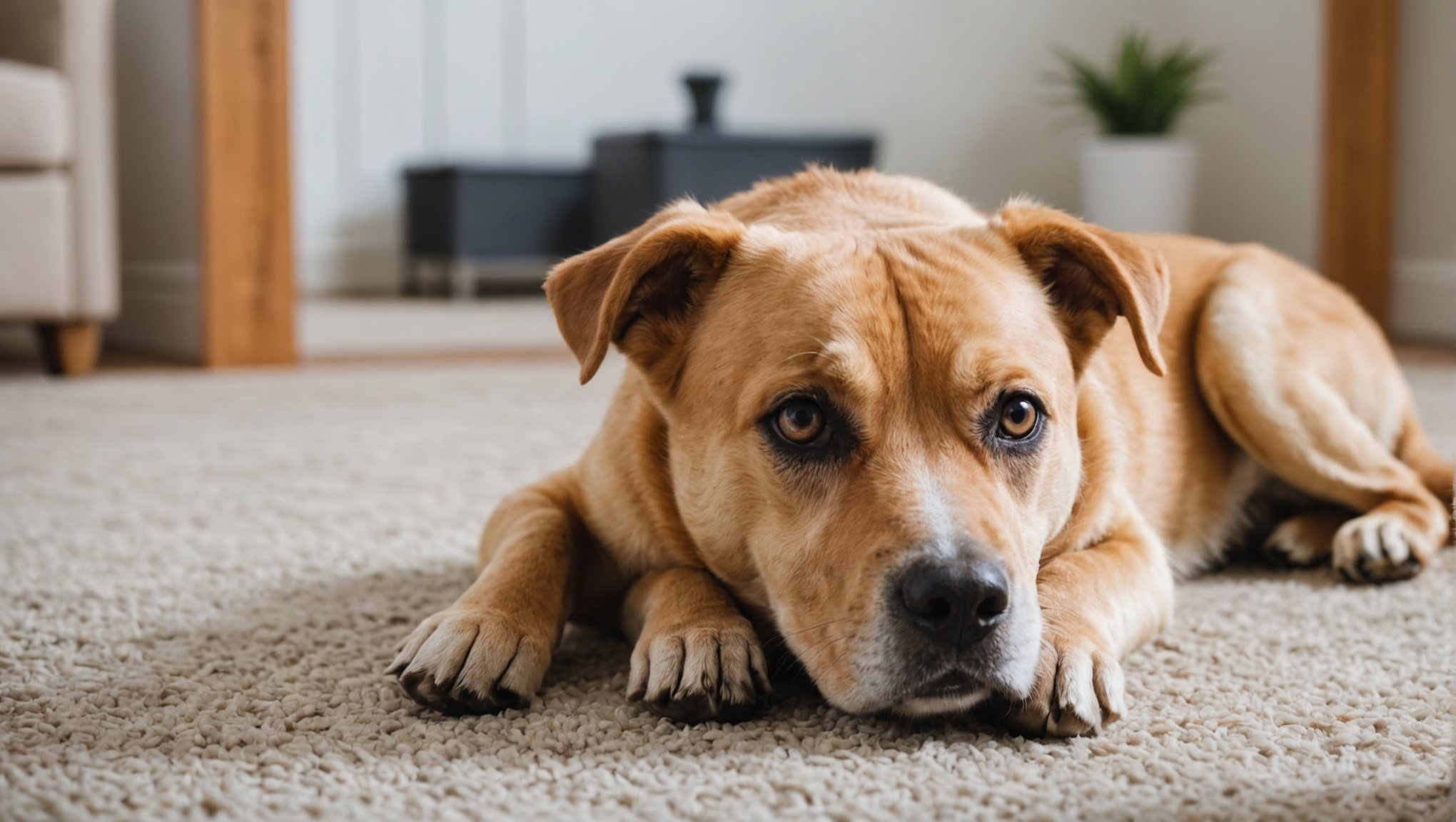Understanding Separation Anxiety in Newly Adopted Pets
Separation anxiety is a prevalent issue among newly adopted pets, impacting their behaviour and emotional wellbeing. When a pet is adopted, the transition from their previous environment to a new home can be overwhelming. This stress can lead to separation anxiety, causing the pet to act out when their owner is away. Understanding the symptoms and causes is key to addressing this challenge effectively.
Common symptoms of separation anxiety in newly adopted pets include excessive barking or whining, destructive chewing, and urinating indoors. These behaviours are not just disruptive; they are signs of distress as the pet struggles to cope with being alone in an unfamiliar environment. Recognising these symptoms early allows for timely interventions to help the pet adjust more comfortably.
Have you seen this : Top Essential First Aid Tips Every Pet Owner Should Know!
Factors contributing to separation anxiety are varied. Previous experiences, such as abandonment or traumatic events, play a significant role. Additionally, the change in routine and environment often exacerbates their anxiety. Some pets may have never been left alone before, intensifying their fear and uncertainty.
Addressing these factors and symptoms with understanding can help create a reassuring environment, reducing anxiety and promoting a healthier adjustment for your newly adopted pet.
Also read : Recognizing Overexertion in Dogs: Key Signs to Watch for During Training Sessions
Gradual Acclimatization Process
Understanding the gradual acclimatization process is key to ensuring your pet’s comfort when easing into separation. This process is crucial as it helps your furry friend adjust to spending time alone, reducing anxiety and stress.
When beginning the gradual introduction to alone time, it’s important to start with short periods. For instance, leave for a few minutes and observe how your pet reacts. Gradually increase the time as they become more comfortable. This approach not only helps in easing into separation but also allows pets to feel more secure over time. You’ll soon notice they might not even notice your absence!
Techniques for gradually increasing separation duration include giving a special toy or treat as you leave. This creates positive associations with your departure, fostering a sense of comfort.
Observing your pet’s response is equally important during this acclimatization period. Monitor their behaviour for signs of distress, such as excessive barking or destructive actions. If these occur, pause and reassess the length of time apart. Remember, the goal is a smooth adaptation, ensuring that your pet remains at ease regardless of your absence.
Crate Training for Comfort and Security
Crate training can be a transformative experience for both pets and their owners. It provides a safe space that can significantly enhance a pet’s sense of security.
Benefits of Crate Training
One of the primary benefits of crate training is establishing a safe space that encourages calmness and confidence in pets. Crates act as a personal haven, reducing anxiety by offering a familiar setting during travel or vet visits. They also play a vital role in house training by helping to develop a regular routine for pets.
Steps for Effective Crate Training
To ensure successful crate training, gradually introduce your pet to the crate. Start by placing treats and toys inside to entice them. Allow them to explore freely without feeling forced. Leave the door open initially so they associate the crate as a positive safe space. Over time, you can begin closing the door for short periods, gradually increasing the duration as your pet becomes comfortable.
Common Mistakes to Avoid
Avoid using the crate as a punishment area, as this can create negative associations. Ensure the crate isn’t too small or too large, aligning it with your pet’s size for optimal comfort and security.
Positive Reinforcement Techniques
Positive reinforcement involves encouraging desired behaviours by introducing a motivating factor. Common training methods include giving treats, affection, or playtime immediately after the desired behaviour is observed. This approach is not only humane but also fosters trust and a strong bond between humans and their pets.
Effective Reward Systems
To develop an effective rewards system, it’s essential to tailor the reward to your pet’s preferences. Most animals respond well to treats, but remember that too many treats can lead to weight issues. Thus, it’s beneficial to incorporate non-food rewards such as extra playtime or verbal praise. Consistency and timing are key. Rewards should be given immediately after the desired behaviour to ensure the association is clear.
Associating Alone Time with Positivity
Conditioning your pet to view alone time positively can help alleviate separation anxiety. Start by incorporating positive reinforcement during short absences. Offer a special toy or treat when you’re about to leave. Over time, your pet will associate your absence with positive experiences. Gradually increase the duration of separations, ensuring each experience remains positive.
Creating a Safe and Stimulating Environment
Creating a safe space for your pet involves careful planning and consideration to ensure pet comfort. Start by choosing a specific area in your home where your pet can feel secure. This means removing any hazardous items, such as wires and small objects that could be swallowed.
A stimulating environment is crucial for your pet’s mental health, especially when they’re alone. Incorporate various toys that promote physical and mental exercise. Puzzle feeders, for example, can engage your pet and mimic the hunt for food, providing both entertainment and a rewarding experience. Rotating toys periodically keeps the environment fresh and exciting.
To ensure your pet remains engaged, consider adding sensory-rich elements. Introduce catnip-infused toys for felines or a snuffle mat for dogs to stimulate their sense of smell. Interactive activities, like laser pointers for cats or tug-of-war for dogs, can enhance this stimulating environment.
Remember, your pet thrives not only from physical safety but from emotional security as well. Consistently providing love and attention is essential in maintaining their comfort and well-being, ensuring a happy, healthy pet.
Managing Your Schedule to Minimize Anxiety
Balancing a busy schedule with pet care can seem overwhelming, but with effective time management, it’s manageable.
Balancing Work and Pet Time
To ensure your pet’s needs are met, prioritize pet care tips tailored to your schedule. Consider setting a specific time each day for feeding and exercise to build a routine for both you and your pet. Time management plays a vital role in ensuring your furry friend gets the attention they need without compromising your work commitments.
Scheduling Quality Time with Pets
Dedicating uninterrupted moments to bond with your pet is crucial. Carve out short yet meaningful periods in your busy schedule for play and affection. This not only strengthens your relationship but also alleviates anxiety for both you and your pet, creating a balanced and harmonious home environment.
Utilizing Assistance and Resources
Don’t hesitate to utilize resources such as professional pet sitters, walkers, or daycare services. Here are some tips:
- Hire a pet sitter for days with a packed schedule.
- Use pet walking services for regular exercise.
- Enroll your pet in daycare for socialization.
These resources can provide your pet with the necessary care, enabling you to focus on work with minimal stress.
Seeking Professional Help
It can be challenging to address pet anxiety on your own. Recognising when to consult a professional can significantly benefit your pet’s wellbeing. Imagine incessant barking or destructive behaviour the moment you leave home; these are signs that might necessitate veterinary advice. Veterinary professionals bring expertise in identifying medical or psychological issues that might contribute to these behaviours.
For more tailored support, behavioural specialists can be a game-changer. These professionals offer insights rooted in psychology, using professional training to help modify pet behaviour. They can assess your companion’s individual needs and suggest targeted strategies that could range from environmental adjustments to specific training routines.
When anxiety symptoms are severe, the guidance of a professional becomes even more critical. In such scenarios, treatments may include medications prescribed by a veterinarian or therapeutic techniques designed by a behavioural specialist. Potential therapies might even include desensitisation training, which gradually acclimates your pet to the anxiety-inducing stimulus.
Engaging with professional resources ensures that interventions are effective and that your pet’s emotional and physical health is catered to comprehensively. Understanding these options empowers pet owners to make informed decisions for their pet’s happiness.











